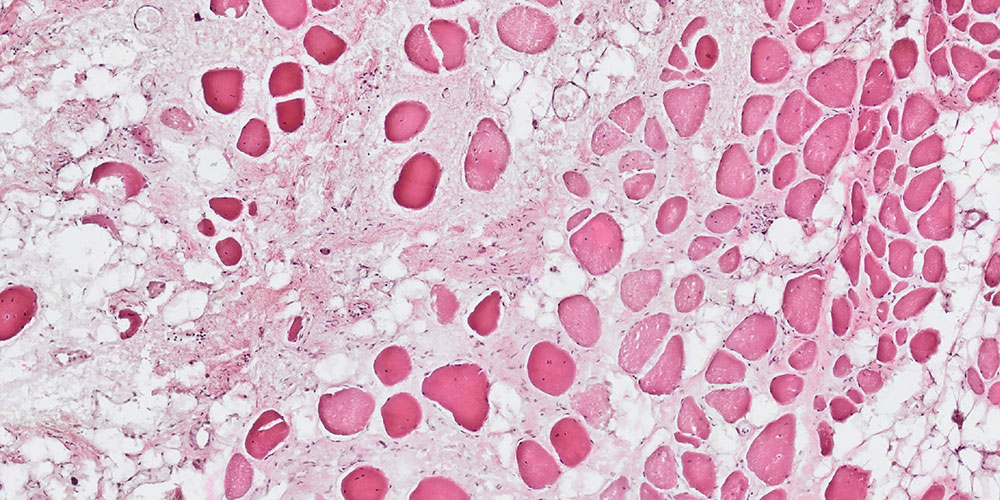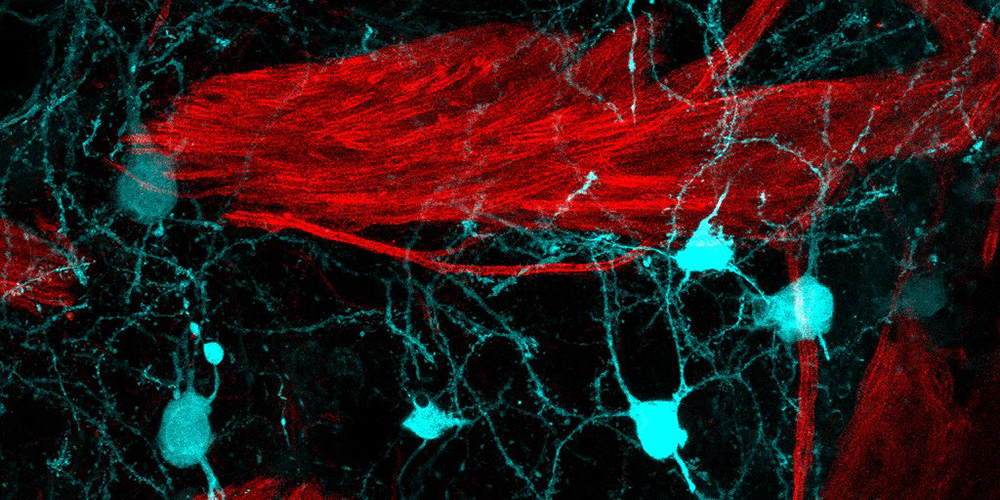Treating muscular disease – Santhera and Biozentrum join forces
Santhera Pharmaceuticals and the University of Basel’s Biozentrum announce their collaboration to advance gene therapy research for the treatment of congenital muscular dystrophy. Innosuisse – the Swiss Innovation Promotion Agency – and Santhera will jointly invest 1.2 million Swiss Francs into this research program.
21 May 2019
Santhera Pharmaceuticals has started a collaboration with Prof. Markus Rüegg, who pioneered a novel gene therapy approach for the treatment of type 1 congenital muscular dystrophy (MDC1A). MDC1A is a severe form of congenital muscular dystrophy that manifests at birth or during infancy.
This inherited neuromuscular disease is characterized by early-onset weakness, progressive muscle wasting and respiratory insufficiency. The disease is caused by a genetic defect leading to a loss of laminin-α2 protein, which is a key component of the cell scaffolding and helps to maintain muscle fiber stability.
Gene therapy approach to treat congenital muscular disease
Previous work of the team led by Rüegg has demonstrated that specifically designed linker proteins could compensate for the lack of laminin-α2. The gene replacement strategy aims to overcome the genetic defect by substituting laminin-α2 deficiency with these two small linker proteins to re-establish muscle fiber integrity in patients.
“We and others have shown that our approach has a profound beneficial effect in mouse models of the disease. The simultaneous expression of the two linker not only restores the structure and function of muscle fibers, but also recovers muscle force and size and markedly prolongs survival,” says Rüegg. “I am looking forward to collaborate with Santhera as our translational research partner to advance our gene therapy approach towards clinical use.”
The non-clinical research collaboration between Santhera and the Rüegg group will explore the feasibility of gene delivery as a basis for subsequent clinical work. “Santhera is committed to advancing its neuromuscular pipeline and building on its leading expertise in drug development for neuromuscular diseases,” added Thomas Meier, CEO of Santhera. “We are excited to collaborate with experts from the Biozentrum to advance this novel gene therapy approach to the clinic for the benefit of patients with this devastating disease. As before, we will continue working closely with clinical experts and the patient community to establish the best way forward.”
Successful first clinical trial
Santhera obtained a license for the medication omigapil from Novartis for the development in congenital muscular disease. This drug has been shown to provide benefit in MDC1A mice and has additive effect to linker proteins. A first clinical trial using omigapil conducted by Santhera together with clinicians in the US demonstrated that it is feasible to run clinical studies in MDC1A patients.
The gene therapy research is co-funded by Santhera and Innosuisse. The Swiss Innovation Agency promotes science-based innovation, especially the partnership between academia and industry with innovation projects, networking, training and coaching, laying the groundwork for successful Swiss start-ups, products and services.



